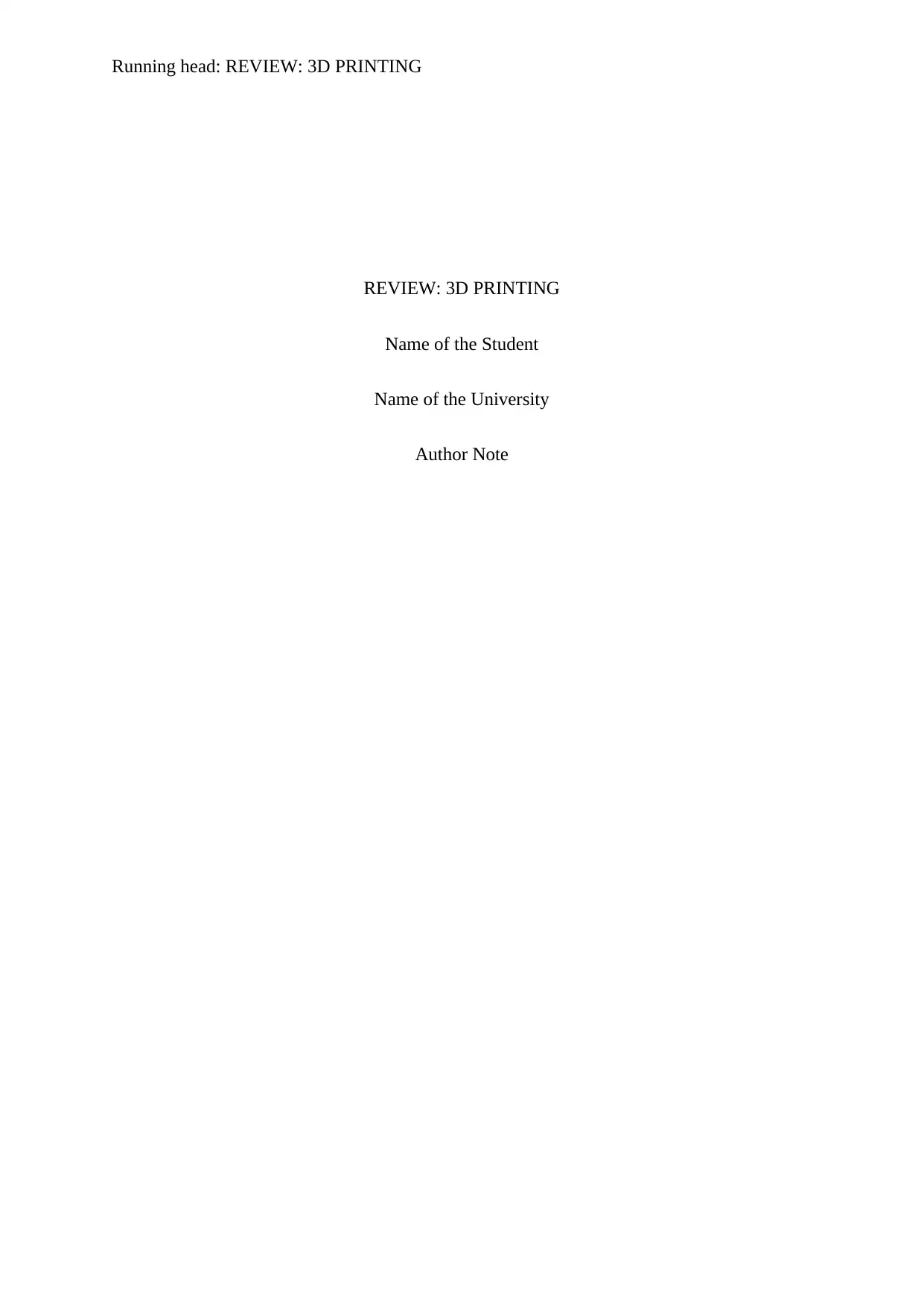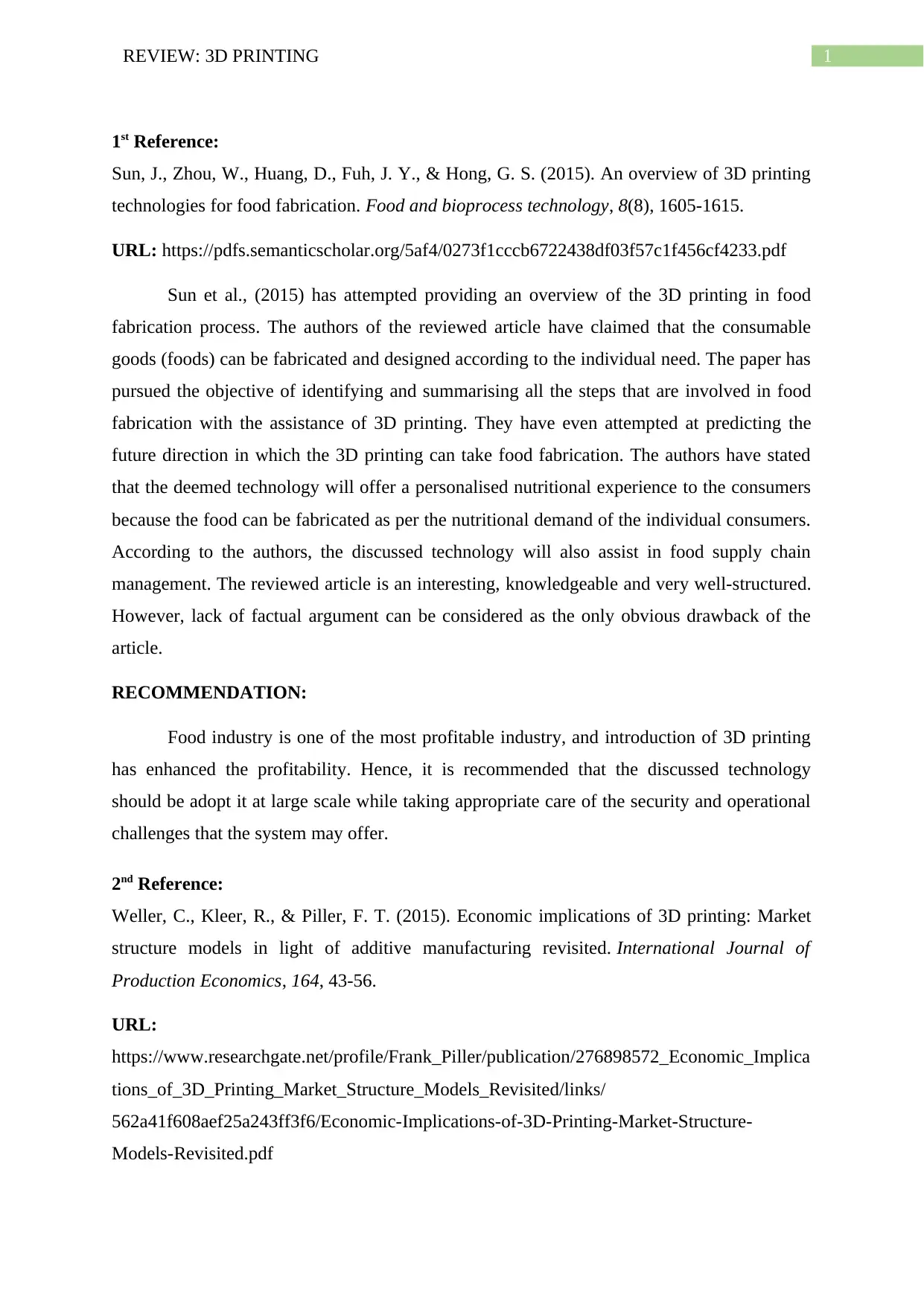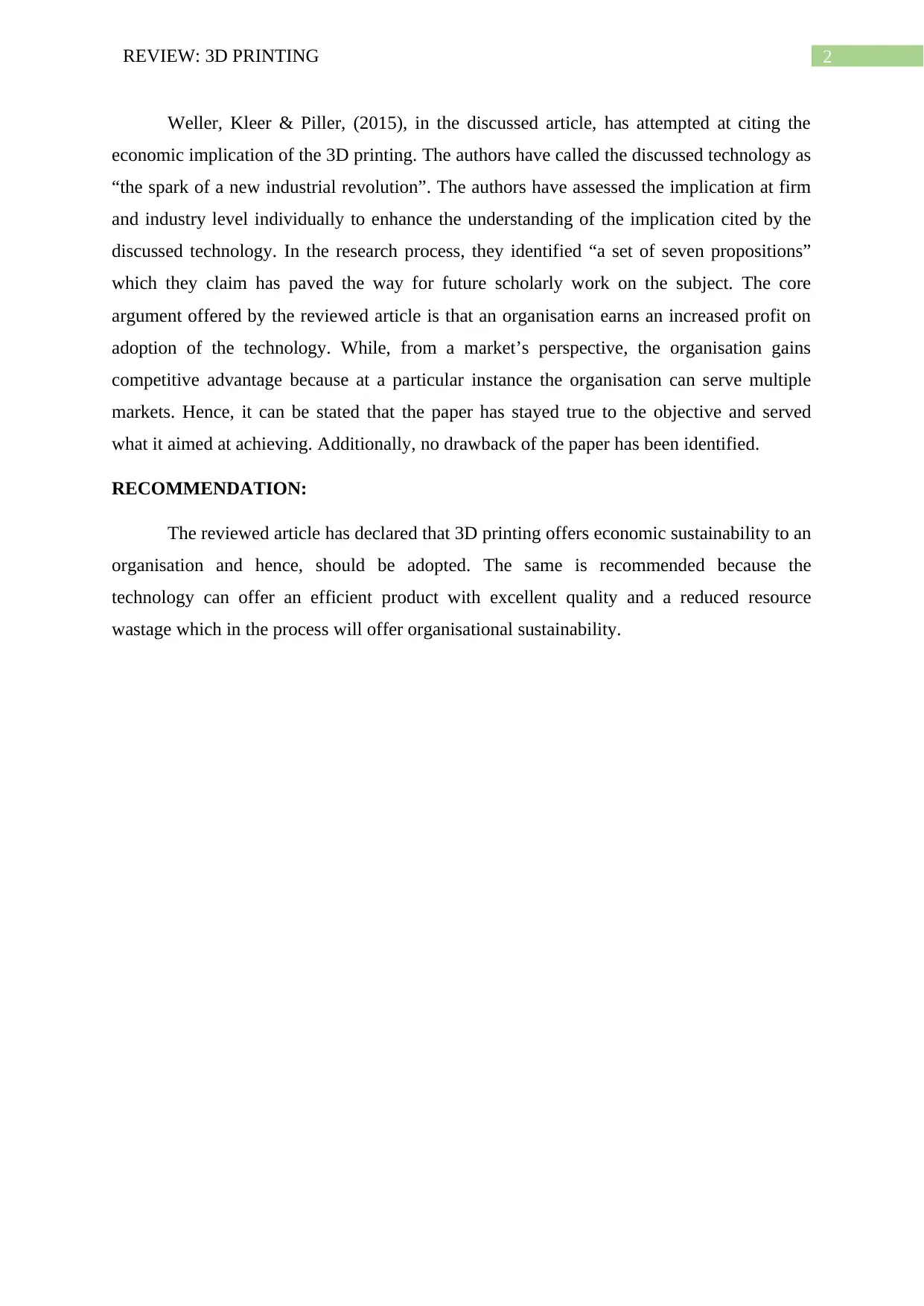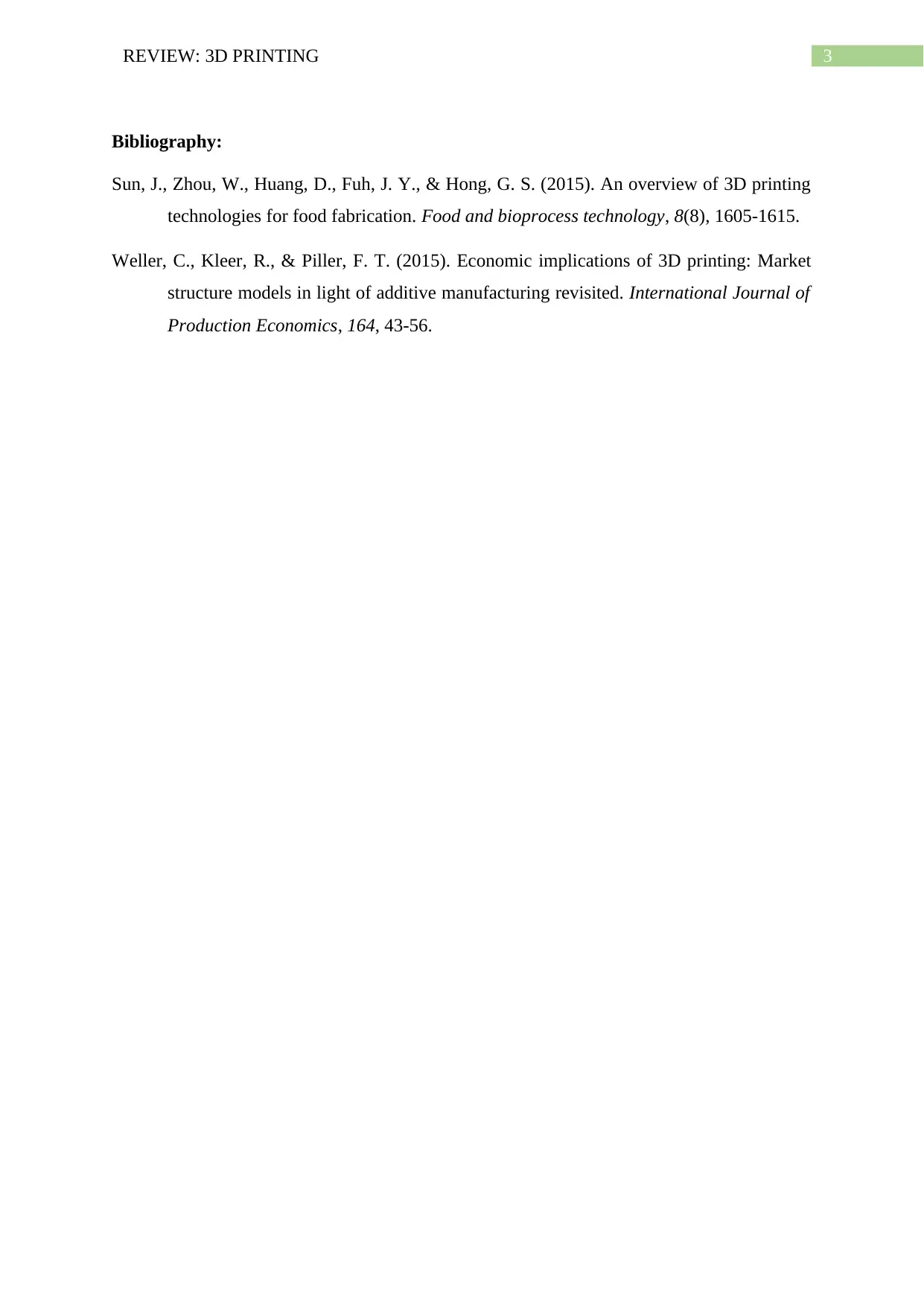COIT20249: In-Depth Analysis and Review of 3D Printing Trends
VerifiedAdded on 2023/06/13
|4
|697
|266
Report
AI Summary
This report provides a comprehensive review of 3D printing technology, analyzing its applications in food fabrication and its economic implications. It examines two key articles: one focusing on 3D printing in food fabrication, highlighting its potential for personalized nutrition and improved food supply chain management, and another discussing the economic benefits of 3D printing for organizations, emphasizing increased profitability and competitive advantage. The report recommends the adoption of 3D printing technology while addressing security and operational challenges, citing its potential for efficient, high-quality products and reduced resource wastage. It concludes that 3D printing offers both economic and organizational sustainability.
1 out of 4









![[object Object]](/_next/static/media/star-bottom.7253800d.svg)